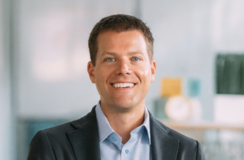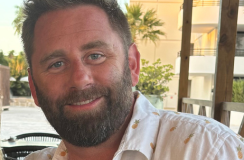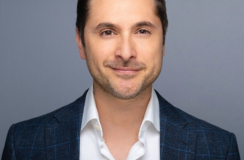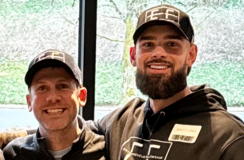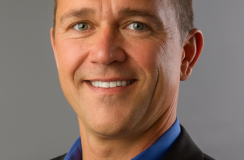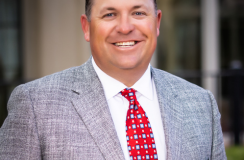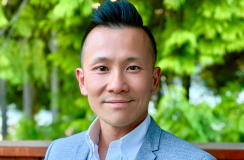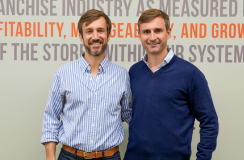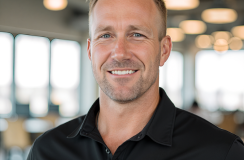n 2007, Andrew Finn joined his friend Tim Urban to help run ArborBridge, which started as an in-person tutoring business. The business was in its early stages, but Andrew saw potential.
The company later shifted its model online, and Andrew and Tim saw an opportunity to differentiate their offering further by owning the software that college counselors used to run their businesses. CollegePlannerPro was a new entrant in the market and growing quickly. They acquired it, and CollegePlannerPro went on to defeat its primary competitor and capture about 80% market share.

Since then, Andrew and Tim have acquired and invested in several other businesses, including security device company Apartment Guardian, which Andrew refers to as “cheap and cheerful”. It’s a straightforward business that the seller hadn’t invested much in because he’d been distracted by other ventures.
After spending so much time creating and running a high-touch, high-overhead service company, Andrew likes niche SaaS businesses that address a specific, niche category.
“The most important thing for people who are in the early part of this journey is to get in the game. Own something.”
In this episode, Andrew explains what he likes about the 1880s businessman perspective, the ups and downs of putting everything you have into creating a company, and what he loves about small-TAM SaaS businesses (which he calls “robots” that solve weird problems). He also shares how owners can take steps to bring an operator on board so that you can ultimately have a company that runs without you.
Check out:
✳️ Top takeaways from the episode
✳️ Episode highlights with timestamps
Acquisition Entrepreneur: Andrew Finn
💵 What he acquired: Andrew joined his friend Tim at an online tutoring company he founded, ArborBridge. A few years later, they acquired CollegePlannerPro, a SaaS for education consultants. In June 2021, they sold the business. Through their holding company G64 Ventures, they’ve acquired and invested in several other companies.
💡 Key quote: “Recurring revenue businesses are just way, way better than service businesses, objectively. The customer’s problem this month is probably the same as last month, and six months before that, and you have built a robot to solve that problem, and the robot will continue to solve that problem.”
👋 Where to find him: LinkedIn | Twitter

Acquisition Tips From the Episode
Top takeaways from this conversation
🔎 Acquire SaaS companies that are in a ‘small TAM’ and serve a small niche.
When evaluating an acquisition, Andrew suggests looking at those that are in a small TAM without venture-backed competitors. (TAM is total addressable market, the size of the entire market in which a product or service competes.)
VC companies play a different game, targeting large-TAM markets. Avoid them.
It’s also important to look at companies that are solving problems that aren’t generalizable. “You want them to just be weird problems specific to that person and that industry,” he says. “The weirder, the deeper, the better, because then you could just be the only one in the world who’s waking up every day trying to solve those problems. Customers will see value in that.”
And as much as he’s bullish on SaaS, Andrew cautions that SaaS businesses are always more expensive and more difficult than you think they’ll be.
⏳ Plan for and groom an operator to eventually take over from you.
Whether your goal is to “move from labor to capital” or you plan to sell your business, you need to plan early and build your business into an asset that you can personally exit. You have to build something that can exist without you.
Andrew tapped his replacement CEO at ArborBridge in 2012, and it took about four years of mentoring until the new CEO was truly in a position to grow and expand on Andrew’s work. It takes time to find the right talent and then to fully show them the ropes, which is why planning early is critical.
“Finding the talent is the most important thing because you can't teach that,” Andrew says. “But after that, it's just really being willing to let somebody else actually take responsibility for things and make mistakes. And you know, a really great way to move the process along is taking long vacations.”
💻 For people who are in the early part of their acquisition journey, just get in the game.
Don’t succumb to analysis paralysis when searching for a business to acquire. Andrew’s advice is to find the business that you feel equipped to handle now whether it’s a local service business or a SaaS. There will always be an opportunity to own a “better” business later on, but you just have to start by owning something.
“If the thing you feel equipped to take on at this point is a lawn care business, then do that. And you'll probably do great with it. And then in five years you’ll maybe want to do something bigger or something that’s a fundamentally better business. But I think that's a great way to start.”
Episode Highlights
Inflection points from the show
[1:26] Investing like a 1880s businessman: Andrew explains his Twitter bio (now changed) was meant to capture that he is a practitioner of business. Not a particular business, just business.
[4:03] Breaking into business: Andrew discusses joining his friend Tim Urban (yes, that Tim Urban of “Wait, But Why”) at ArborBridge, an online tutoring business Tim started in 2007.
[6:45] Closing a door: Andrew stepped down as ArborBridge’s CEO five years ago. In June 2021, they sold the business and Andrew describes it as a “super successful” exit. He talks about the emotions of exiting a business he’d poured everything into since coming on board when he was just 25.
[11:27] Acquiring a SaaS to complement a service business: Looking to differentiate ArborBridge for the long term, Andrew talks about acquiring CollegePlannerPro.
[15:00] A change in strategy: While originally intending to acquire CollegePlannerPro for lead generation, it didn’t turn out that way. Andrew discusses why the SaaS turned out to be a great business on its own.
[19:30] SaaS and recurring revenue FTW: Andrew touts the benefits of having tech to address customer issues. “The customer’s problem this month is probably the same as the customer’s problem last month … and you’ve built a robot to solve that problem.” Ultimately, he thinks SaaS companies are undervalued in the marketplace (even though they sell for higher multiples than service businesses).
[24:20] Market indicators of a good SaaS: Andrew discusses the factors that lend themselves to an intrinsic growth rate.
[25:40] Next steps: In the short term, Andrew isn’t looking to make an acquisition, but says a good opportunity that could fit within his holding company would be hard to pass up. He is open to independent sponsor investments and self-funded searcher deals in the $500,000 to $1.5 million range.
[27:03] Sub $1m EBITDA opportunity: Andrew explains a tweet where he said that $500-$750k EBITDA businesses are just a few operational efficiencies away from being $1m EBITDA businesses.
[30:30] Low-hanging fruit: Andrew talks about the second business he acquired and the reasons why business owners might not invest energy to do some basic things that would yield growth.
[34:02] Jump from labor to capital: Entrepreneurs want to graduate from being compensated for their time, to being compensated for their judgment. Andrew talks about the importance of delegating your day-to-day to the point that your company can exist without you.
[35:24] Grooming your successor: It’s important to start early when you’ve pegged the person you envision operating the business after you’ve stepped out. In the case of ArborBridge, it took 3-4 years to fully train up Andrew’s replacement.
[39:05] Seeking a replacement operator: Andrew explains why operators require a different set of skills for a different phase for the company.
[42:12] Build vs. acquire: Andrew compares his experience building a business to his experience acquiring businesses.
[46:08] Capital Camp: This is a private equity conference that many of the familiar names in the small business investing world attend. Andrew just returned from it and reports on the scene.






%20-%20thumbnail.png)

.png)




%20-%20thumbnail.png)
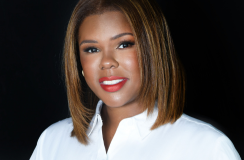

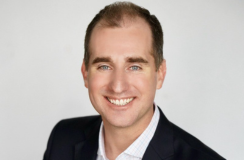

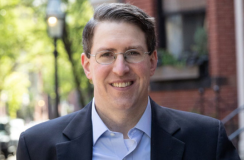




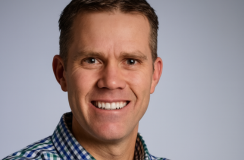

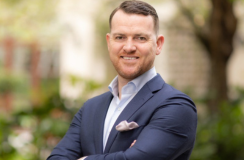



%20-%20thumbnail.png)


